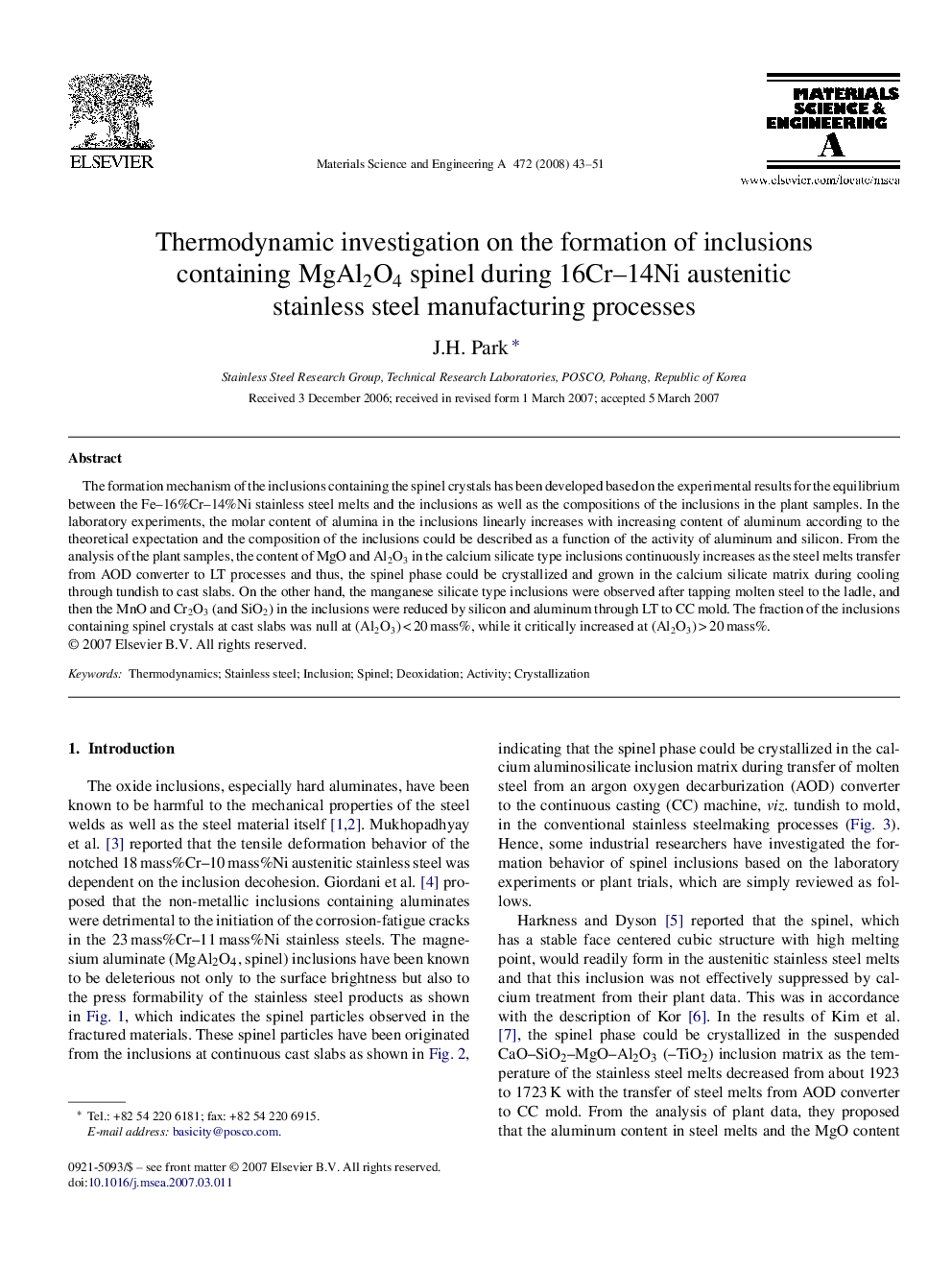| Article ID | Journal | Published Year | Pages | File Type |
|---|---|---|---|---|
| 1583109 | Materials Science and Engineering: A | 2008 | 9 Pages |
The formation mechanism of the inclusions containing the spinel crystals has been developed based on the experimental results for the equilibrium between the Fe–16%Cr–14%Ni stainless steel melts and the inclusions as well as the compositions of the inclusions in the plant samples. In the laboratory experiments, the molar content of alumina in the inclusions linearly increases with increasing content of aluminum according to the theoretical expectation and the composition of the inclusions could be described as a function of the activity of aluminum and silicon. From the analysis of the plant samples, the content of MgO and Al2O3 in the calcium silicate type inclusions continuously increases as the steel melts transfer from AOD converter to LT processes and thus, the spinel phase could be crystallized and grown in the calcium silicate matrix during cooling through tundish to cast slabs. On the other hand, the manganese silicate type inclusions were observed after tapping molten steel to the ladle, and then the MnO and Cr2O3 (and SiO2) in the inclusions were reduced by silicon and aluminum through LT to CC mold. The fraction of the inclusions containing spinel crystals at cast slabs was null at (Al2O3) < 20 mass%, while it critically increased at (Al2O3) > 20 mass%.
